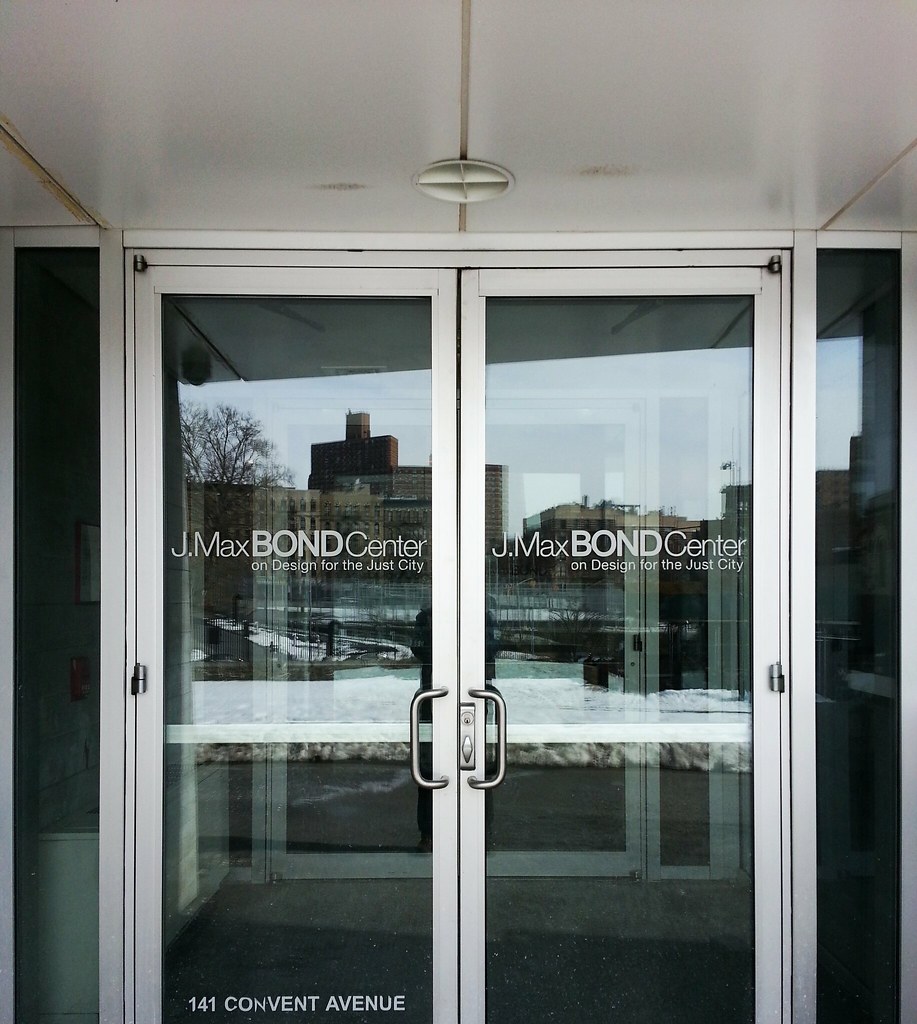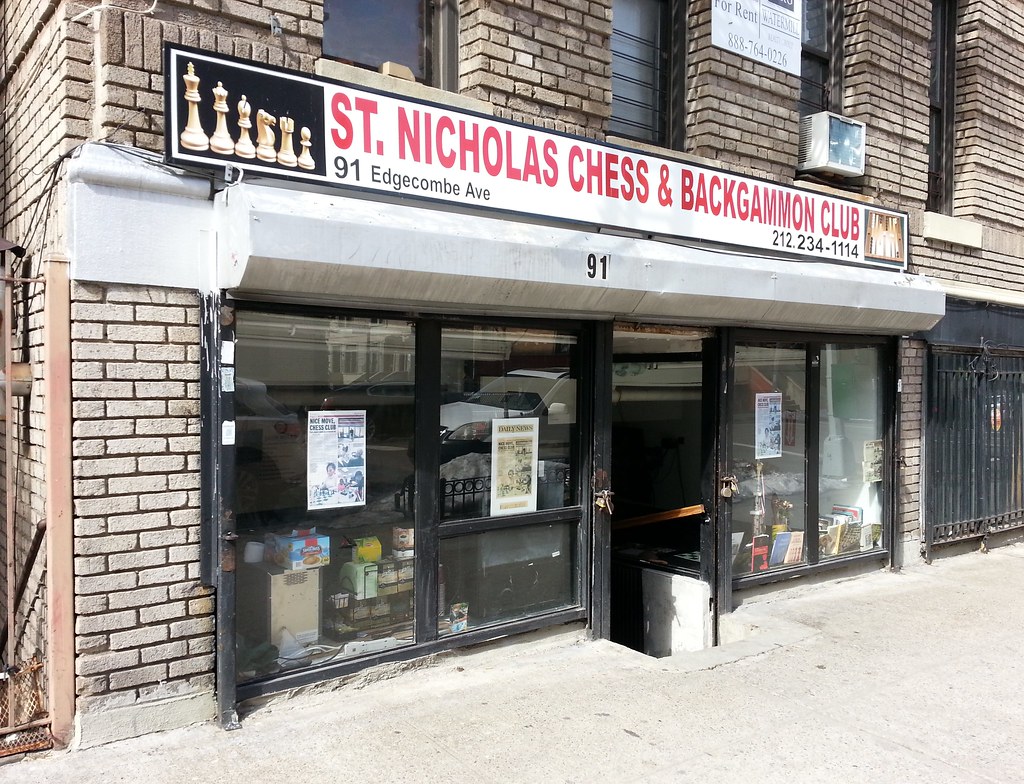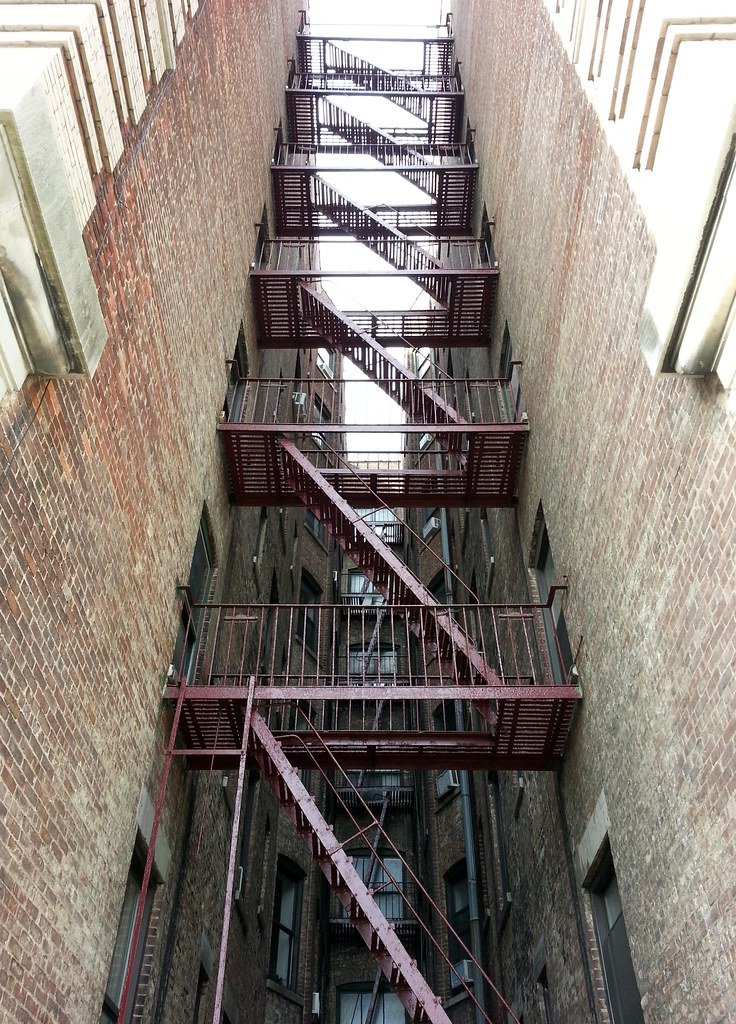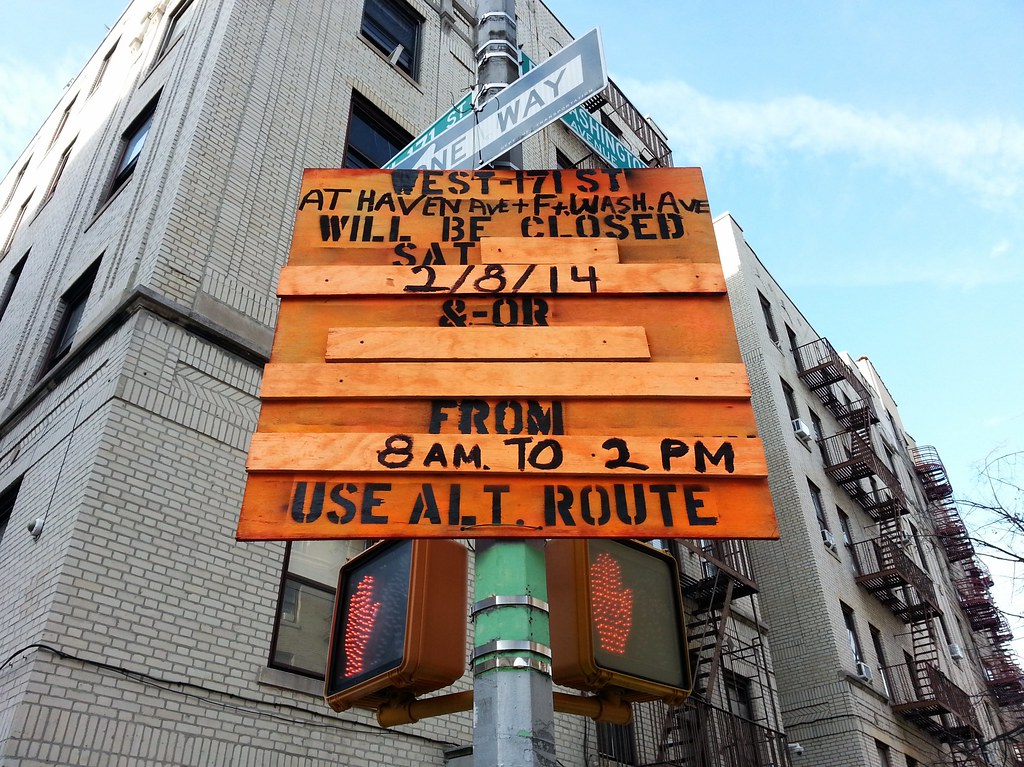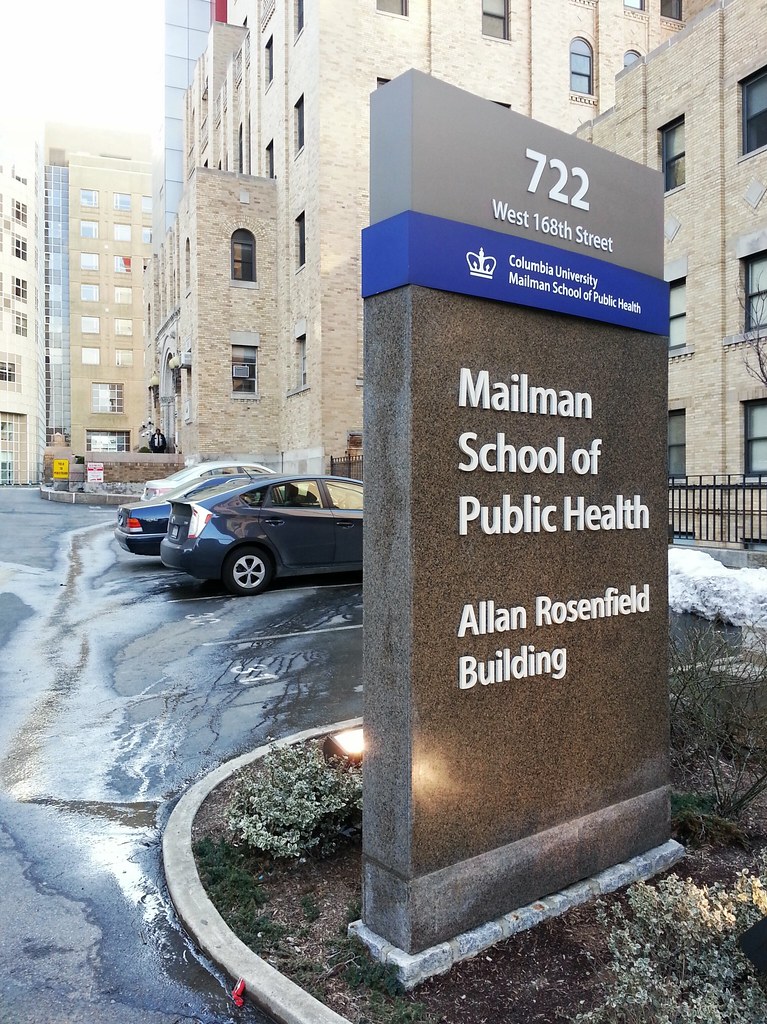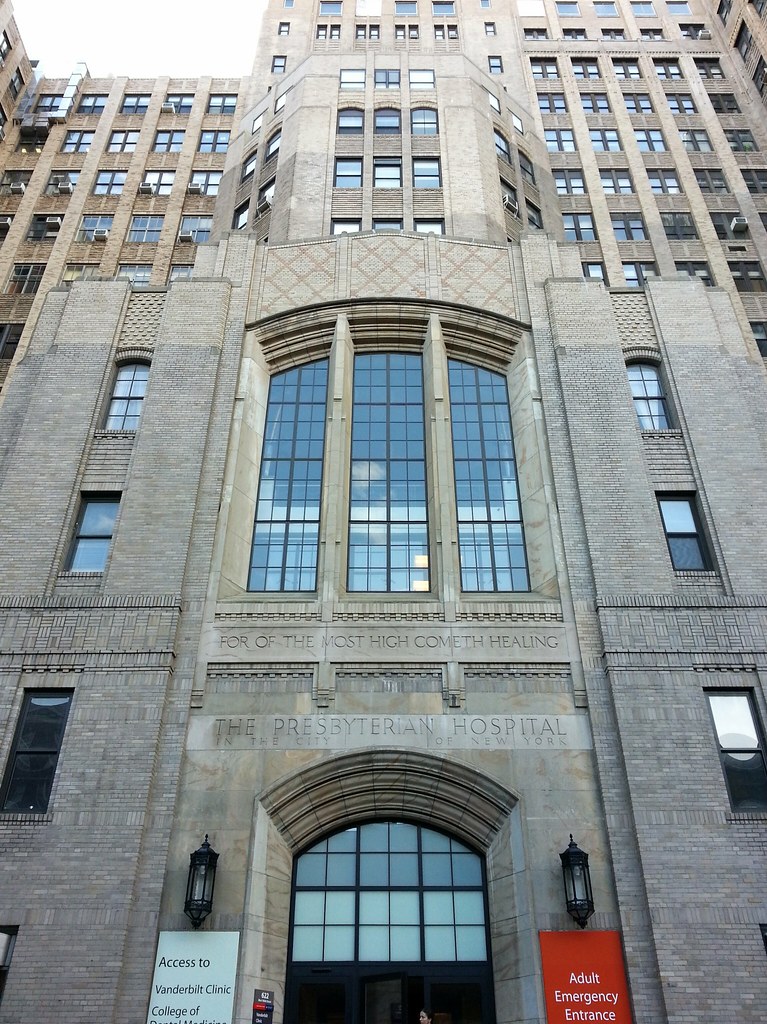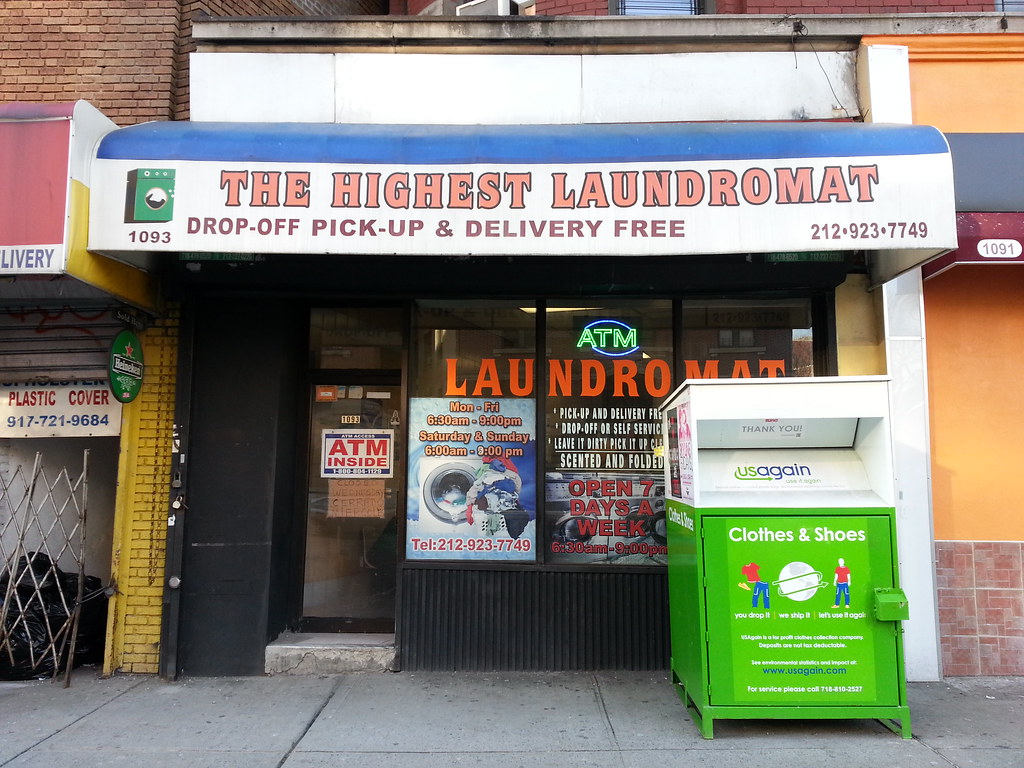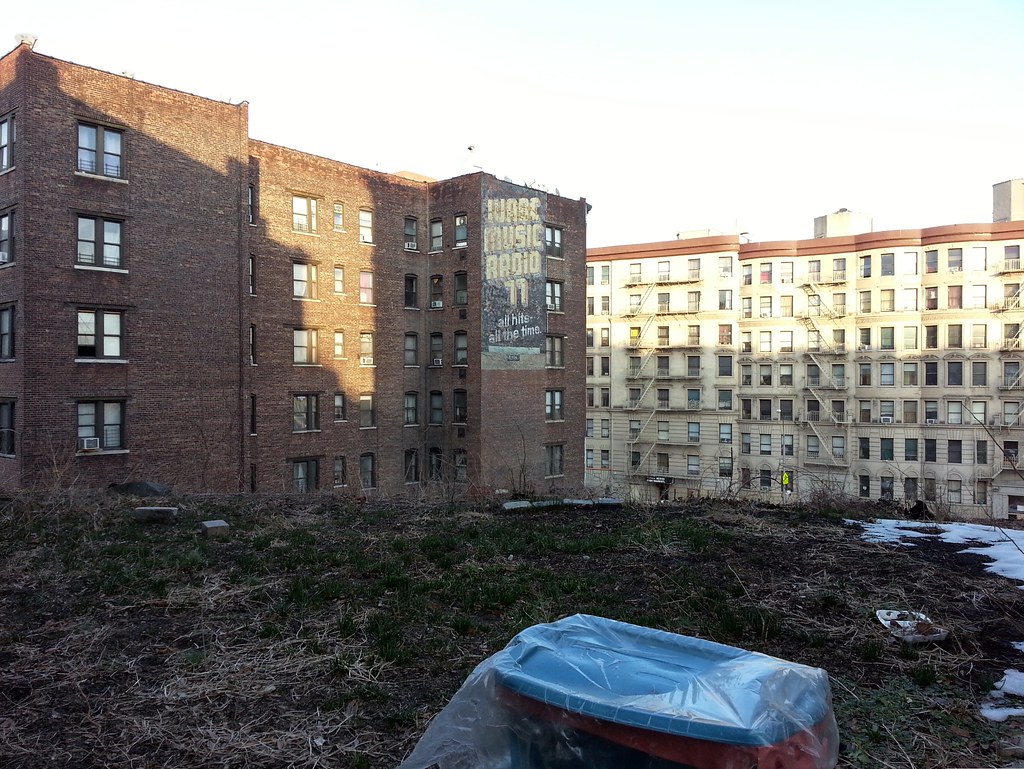

The plaque above, dedicated here on City College's South Campus in 1959, reads:
To this Remembrance Rock has been brought precious earth from the battlefields of Gettysburg, San Juan Hill, Argonne Forest, Normandy Beach and Korea to memorialize the gallant boys of Alma Mater who died in our wars. Here also has been placed soil from City Hall, the old 23rd Street building and the crowded tenements of our city to symbolize the gratitude of all those students who here received a free college education. May Remembrance Rock ever serve as a place for alumni of the City College to come to, pause and remember.There's another nearby plaque, added to the rock in 1999, commemorating the decision of the city's public university system (CUNY) to adopt an open admissions policy in 1969, a decision spurred by the takeover of City College's South Campus that same year by more than 200 mostly black and Puerto Rican students protesting the college's lack of diversity.
(The two glass-clad structures rising in the background, still under construction but mostly complete, are CUNY's Advanced Science Research Center and City's College's Science Building.)
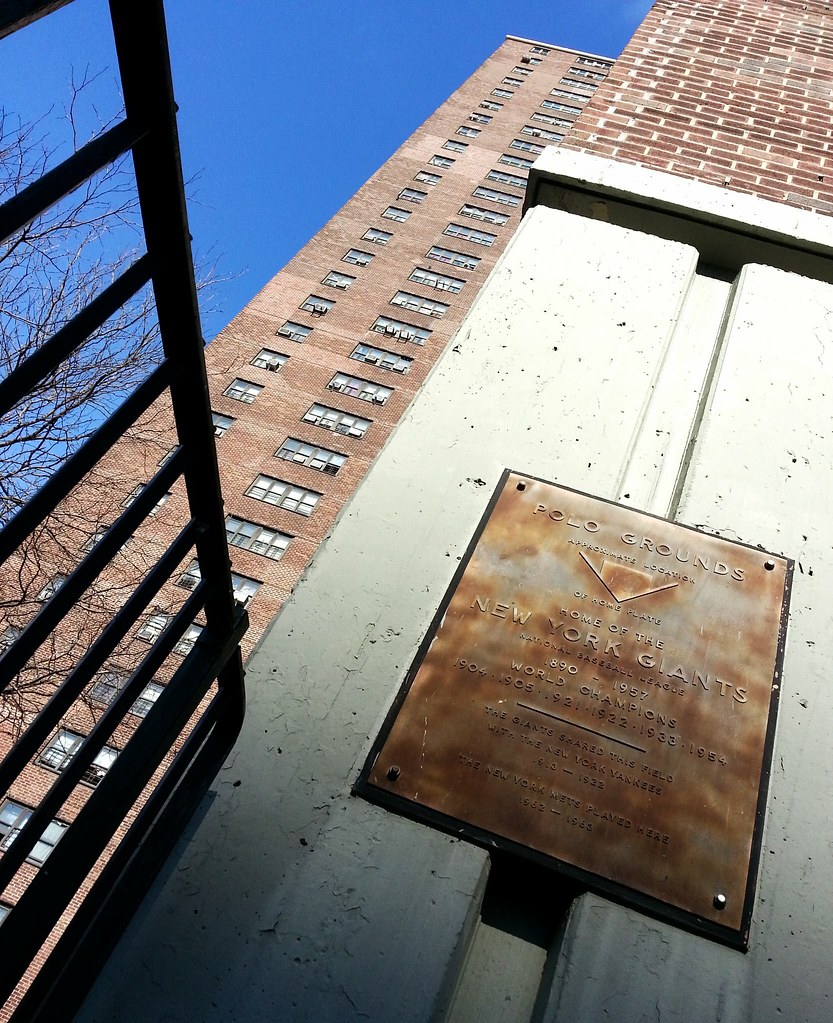
Here's a close-up of this plaque found at today's Polo Grounds Towers, built on the former site of the Polo Grounds.
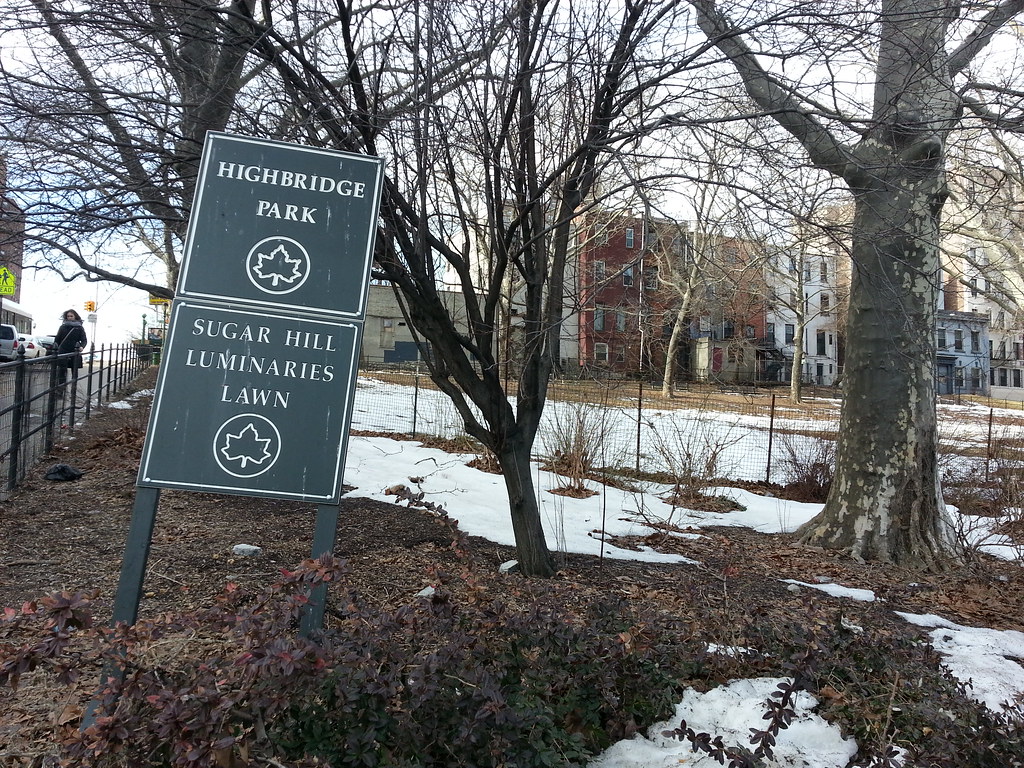
This triangular section of Highbridge Park commemorates the many prominent African-Americans who made their homes in Sugar Hill during the 20th century. According to the Parks Department:
Residents included such political reformers as W.E.B. DuBois, founder of the National Association for the Advancement of Colored People (NAACP), Walter White, secretary of the NAACP, and the Reverend Adam Clayton Powell Sr. Musicians and performers such [as] Paul Robeson, Cab Calloway, Duke Ellington and Billy Strayhorn also lived here. The field of arts and letters was represented by Langston Hughes, Ralph Ellison, Aaron Douglas and William Stanley Braithwaite. Professionals included Thurgood Marshall, the first African-American U.S. Supreme Court justice.
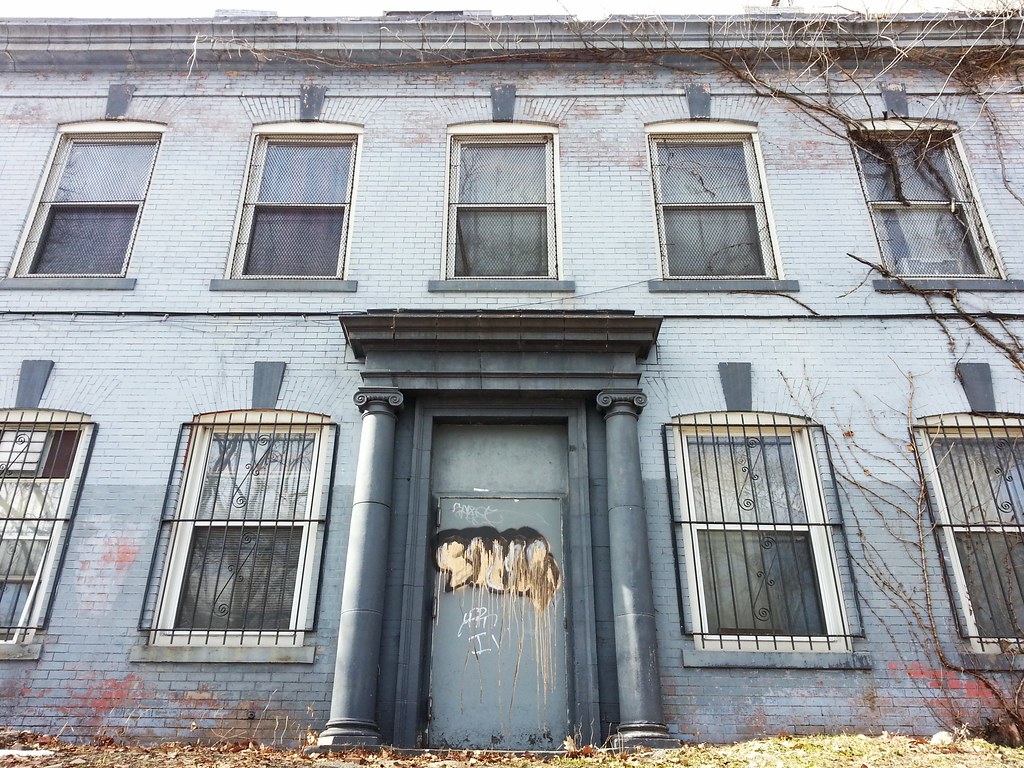
This is the rear facade of the old Washington Heights Free Library (currently Bethel Holy Church). Visible at right in the background of the previous photo, it faces out onto the Sugar Hill Luminaries Lawn, which was apparently known as the Library Lawn in the early years of the 20th century.
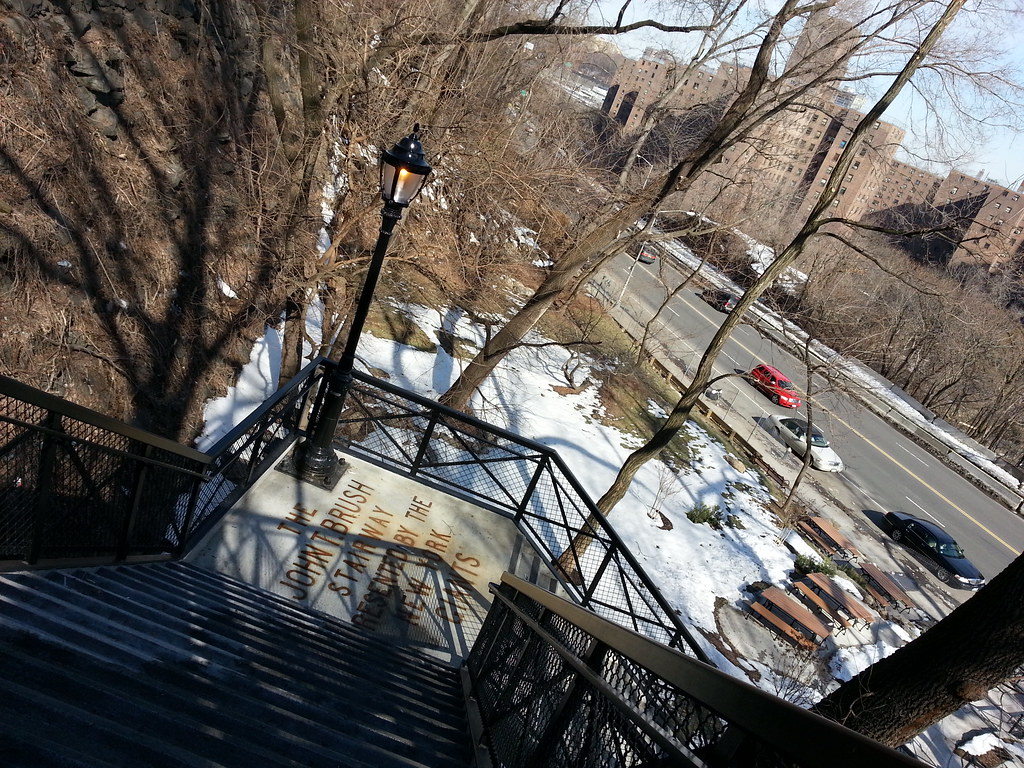
Just over 100 years ago, the John T. Brush Stairway was dedicated in honor of a former owner of baseball's New York Giants. It provided passage from the top of Coogan's Bluff down to the Polo Grounds, where the Giants played. (As evidenced by this hilarious photo, Coogan’s Bluff was, according to the NY Times, "a sort of Tightwad Hill for local fans, a place where those unwilling or unable to pay the stadium’s entrance fee had a clear, if distant, view of the proceedings at no charge.")
After decades of deterioration, the stairway recently underwent a $950,000 reconstruction (here's a view from the bottom), although it's still off limits to the public. It was supposed to reopen about a year and a half ago, but I've learned that it's exceedingly rare for any construction project in New York to run on schedule, even something as seemingly simple as a staircase.
From what I can tell, the steel letters visible in the landing above ("THE JOHN T. BRUSH STAIRWAY PRESENTED BY THE NEW YORK GIANTS") are the only parts of the original stairway that were retained during the reconstruction. With the Polo Grounds itself long gone, these letters are quite possibly the last surviving physical link to the old ballpark.
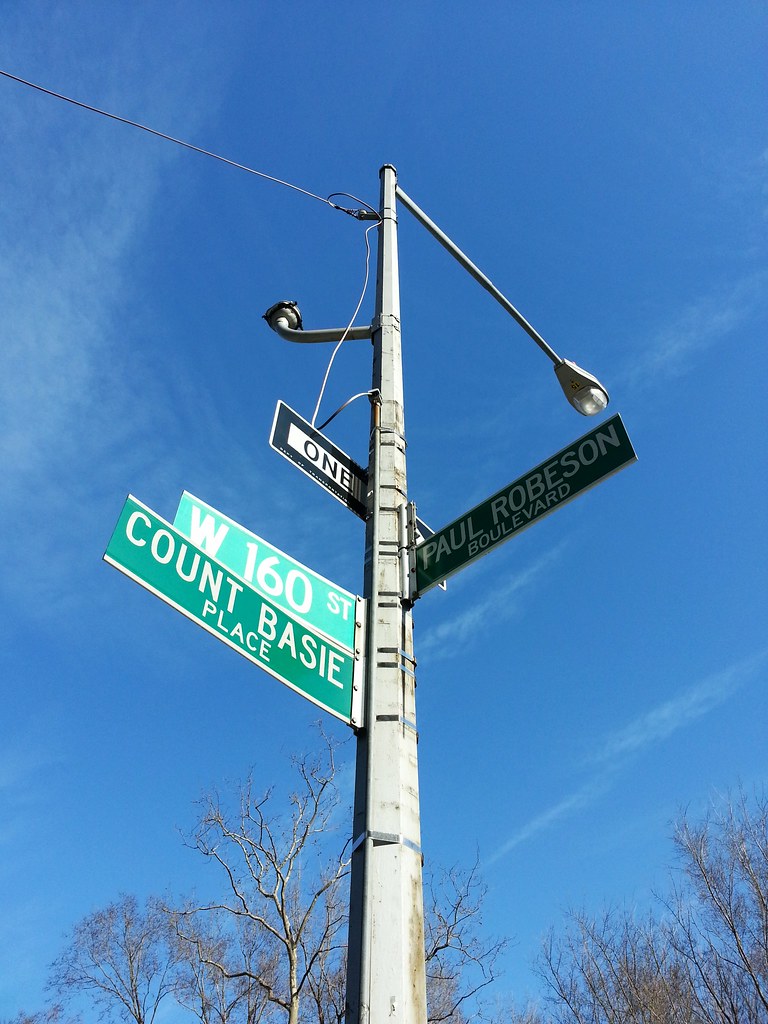
Count Basie and Paul Robeson were both residents of 555 Edgecombe Avenue (Street View), the apartment building that stands at this corner.
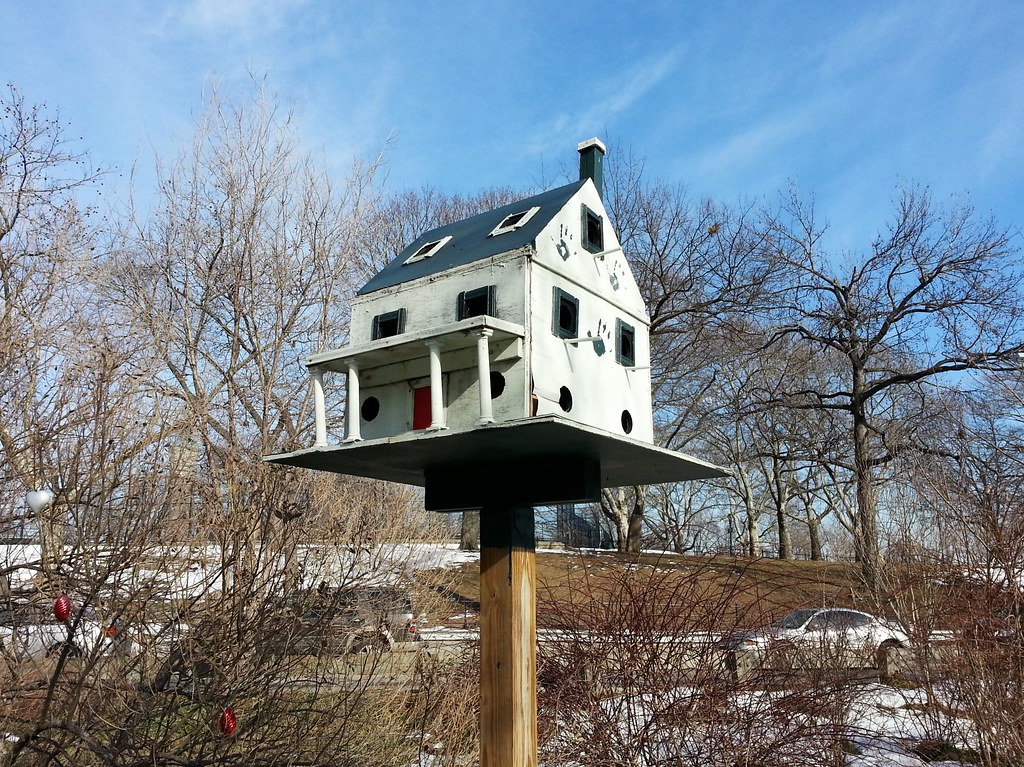
Located across from the 33rd Precinct station house on the outskirts of Highbridge Park
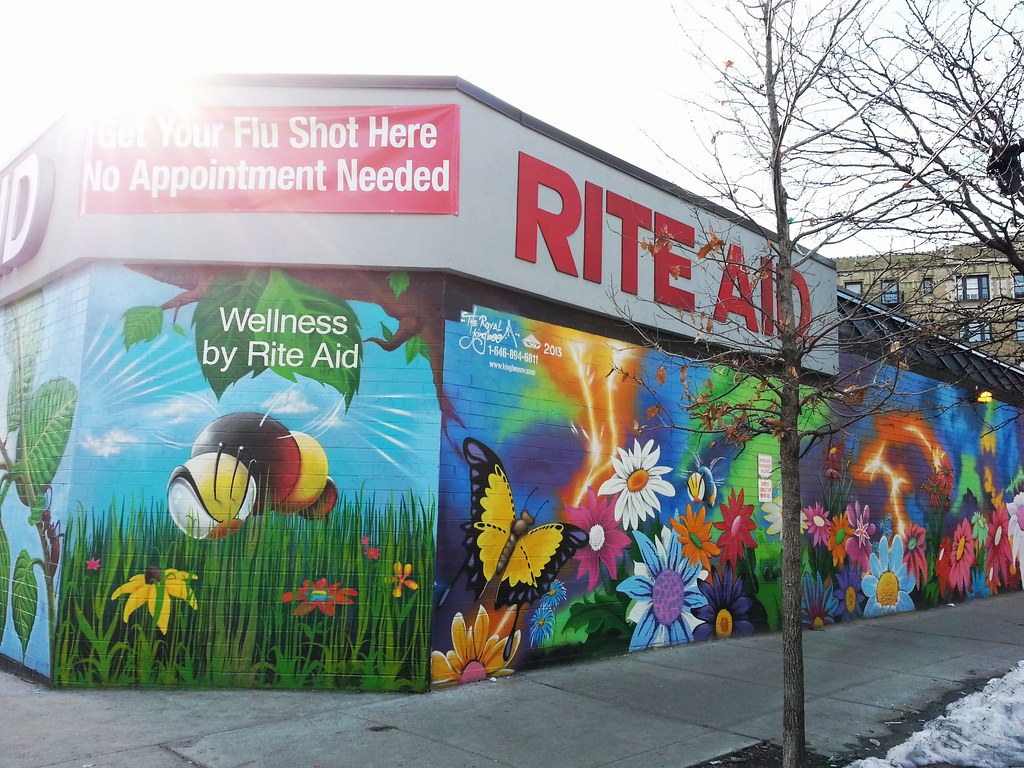
once again, this time at the former location of this mural (wider shot).

Here we are again at this World War I memorial sculpted by Gertrude Vanderbilt Whitney, founder of the Whitney Museum of American Art. The surrounding park, Mitchel Square, is named for John Purroy Mitchel, the former NYC mayor who, after joining the Army's aviation service during World War I, fell out of his plane on a training flight and plummeted to his death.
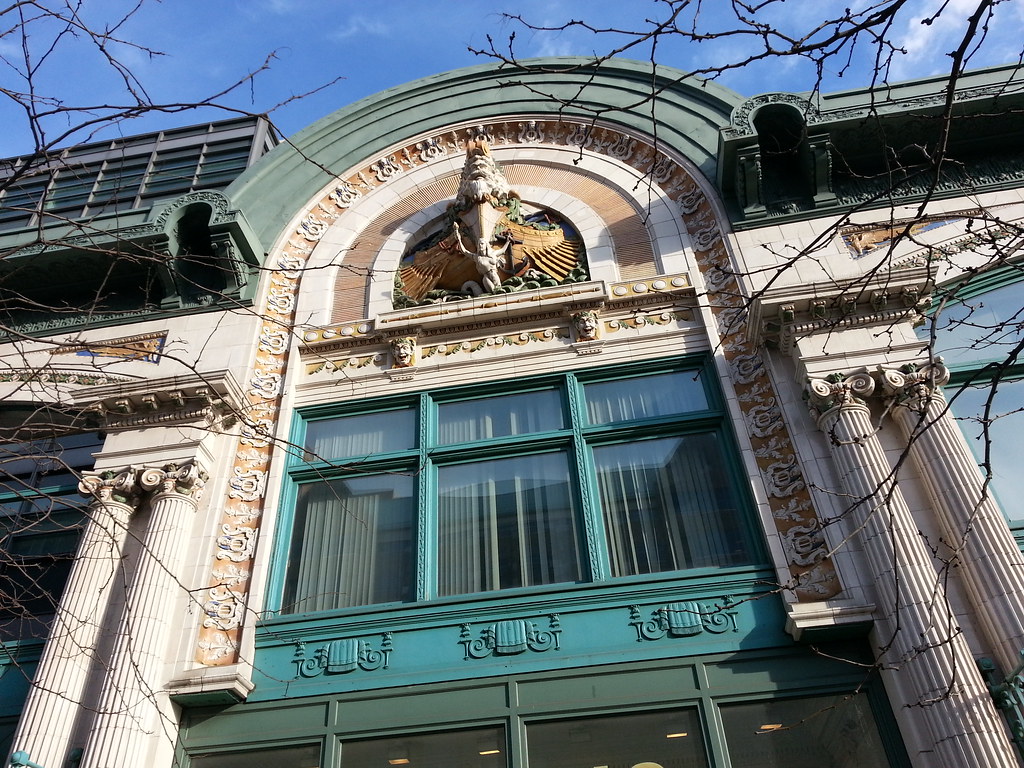
Neptune and the Argo (closer look) preside over the main entrance to the former Audubon Ballroom and Theater, where Malcolm X was shot and killed in 1965. Columbia University has since built the multi-story Audubon Business and Technology Center on the site (partially visible at left; bird's-eye view), while also restoring a good portion of the original facade and part of the ballroom where the shooting occurred, and providing space inside for the Malcolm X and Dr. Betty Shabazz Memorial and Educational Center.
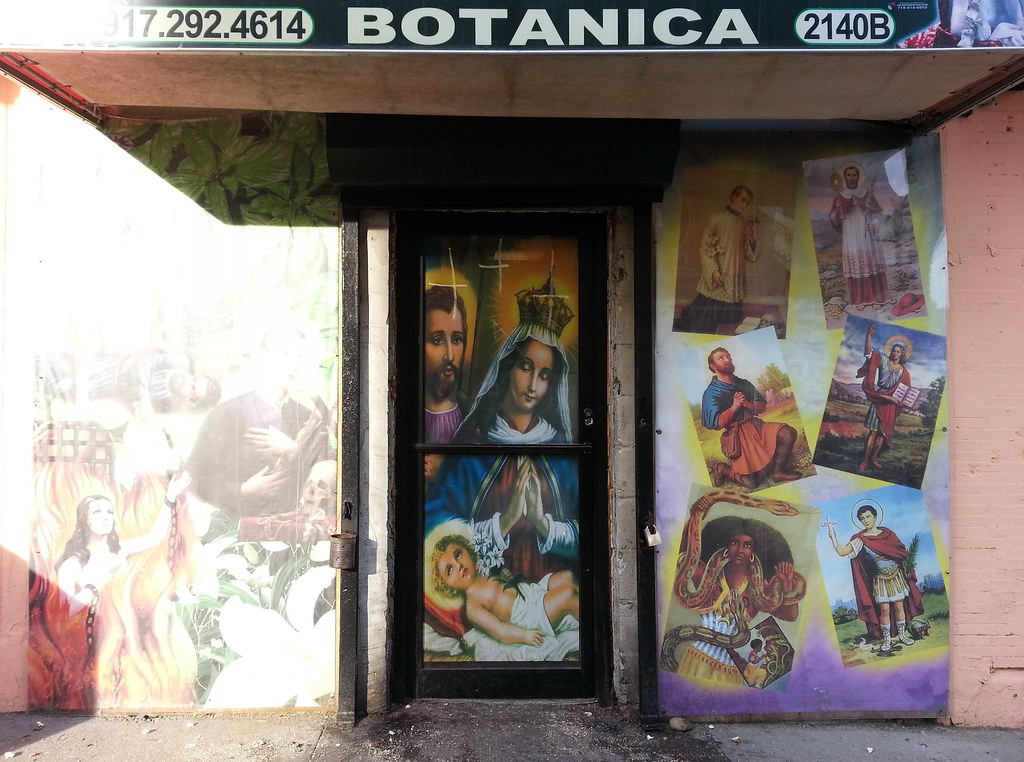
In the lower left, you can see the Anima Sola, whom we previously encountered, in three dimensions, at another botánica.
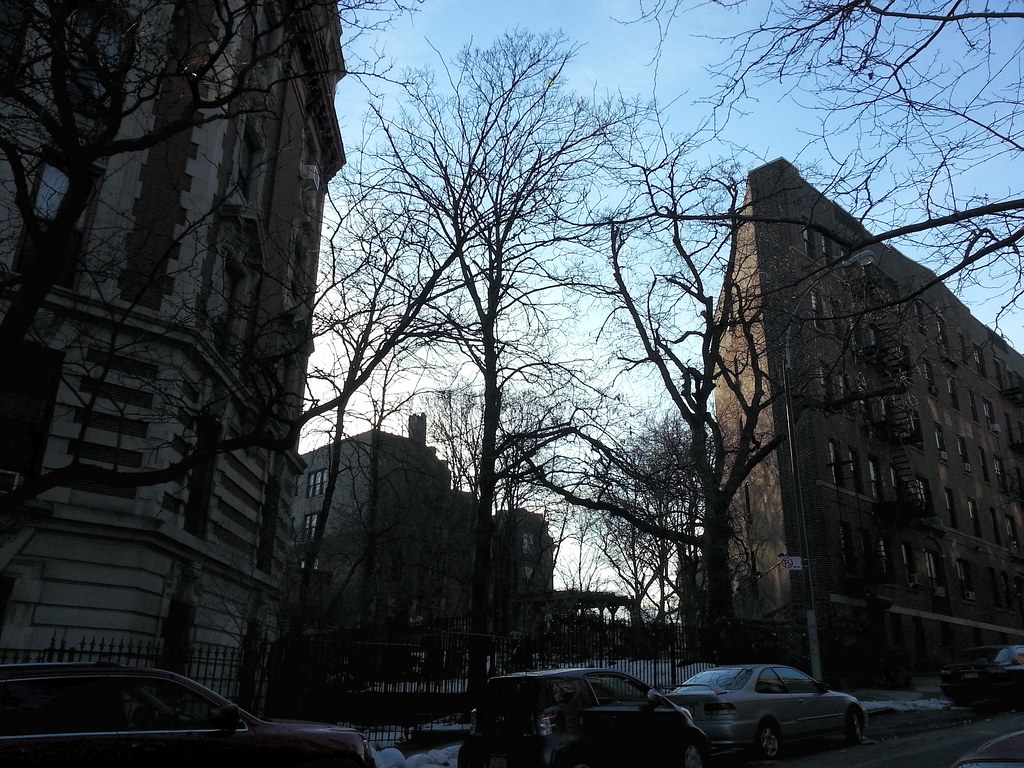
The Old Croton Aqueduct, out of service for several decades now, still cuts a slanted swath across the street grid of Upper Manhattan on its subterranean path from the southern end of Highbridge Park down toward 151st Street, where it turns south and runs directly beneath Amsterdam Avenue for a couple of miles. Standing on 153rd Street, above, you can see some oddly shaped buildings whose oblique walls skirt the course of the aqueduct as it slices diagonally through the middle of the block on its way toward 152nd Street. The aqueduct's route through this area is clearly visible as a treed corridor in aerial photos, and as a chain of elongated lots arcing across the city's tax map with total disregard for any sense of rectilinear real estate order.

I'm not sure if the organization of that name still exists; perhaps the group's memory now lives on in this hopefully fertile patch of earth beside Mt. Zion Lutheran Church.

